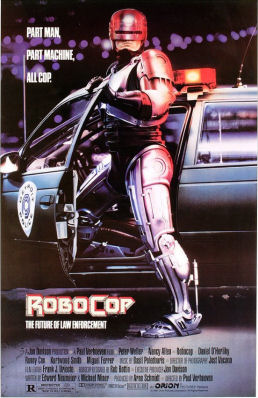We’re taking a break—not sure how long—from Heinlein again this week; I’ve had information from various people about my Heinlein post… and thank you ALL!… that I have to go over, ruminate and cogitate about. Plus I was directed to Samuel R. Delaney’s book The Jewel-Hinged Jaw as a good source of commentary on Heinlein and other writers, and I’m now captivated by a book I failed to read when it came out. If you’ve never read any of Delaney’s prose, he is a master. I can barely call myself a writer, compared to him. So now I have another book I have to read and integrate with all the great stuff I’ve found out about Heinlein. I swear, this column is one heck of a learning experience for me—and I’ve been reading SF/F for more years than I care to admit! So while you’re waiting, go read some more Heinlein, some Delaney or some Panshin, fiction or not—they’ve all written both—and come back to me with your opinions, please?

Anyway, because I’ve got all that stuff to do (plus preparing for our trip to visit the ’rents in Missouri; plus my old friend from Edmonton, Alberta—Randy Reichardt, guitarist and librarian ‘straordinary—is coming tonight and we’re having a Beatles bash tomorrow night) and I don’t know how long it will take, I’ve decided that with the release onto DVD (and Blu-Ray) of the 2014 Robocop, I’d take a look and see how that one compared with the original Paul Verhoeven movie (1987). I didn’t bother to see the new Robocop in the theatre because it looked like a CGI “bullet ’n’ explosion” fest.
Since you’re all SF/F fans—if not all genre movie buffs—you probably already know the plot of the 1987 movie, but just in case I’ll recap it for you here. Detroit’s in financial trouble; nearly broke (gee, how prescient). The city’s got so many financial woes that the police department has been outsourced to a manufacturer of automated “anti-crime” machines, called Omni Consumer Products, or OCP for short. Since it’s mostly Old Detroit, which is riddled with crime and criminals, plus the homeless and low-income people, the Old Man of OCP (Dan O’Herlihy) has a dream—to tear down Old Detroit and build the city of the future: Delta City. But all those criminals and people infesting the place need to be dealt with. Dick Jones (Ronny Cox) has a plan: the Enforcement Droid (ED-209) will deal with them! Unfortunately, ED has a software glitch (he shoots people who’ve already surrendered) and Dick’s stymied.
But Bob Morton (Miguel Ferrer), one of Dick’s underlings, has a plan: the “Robocop” project; all they need is a suitable body of a critically injured—or dead—cop (since all the Detroit Police members have signed release forms) whom they can surgically alter for the program, turning him into the best police cyborg (cybernetic organism) you’ve ever seen. And coincidentally, who comes into the East (or West, I forget) Division as a transfer from the upscale South Division? Why it’s Officer Alex J. Murphy (Peter Weller), who’s paired with Officer Lewis (Nancy Allen) to begin with; on one of their very first outings they run into the gang of criminal leader Clarence Boddicker (Kurtwood Smith), and Murphy gets himself shot up “real good.” In fact, he becomes officially deceased, and therefore a candidate for the Robocop program. He’s lost both legs, his left arm and part of his brain (and Bob makes sure he “loses that other arm”); all will be replaced by cybernetics and electro-mechanical parts, making him a more human version, perhaps, of ED-209.
But to shorten a long story, the human side reasserts itself, and Robocop eventually remembers who he really is and, with the help of partner Lewis, takes down the evil Boddicker and his gang plus Dick Morton of OCP, who’s actually been running Boddicker and his gang. (That’s the really quick version.)

Now the special effects are rather dated today; ED-209 was a stop-motion model (and it shows; but we Harryhausen fans are still charmed); there are only CRT TVs (including what Robo/Murphy himself sees through) and so on; and if that simple story plus some old SFX were all there was to it, it probably would have sunk without a trace like so many SF/F movies have. But the movie was nuanced: besides the likeable characters of Lewis and Murphy (as well as the desk sergeant played by Robert DoQui), there were several well-written sinister characters: Morton, Jones, Boddicker and his henchmen (especially Emil [Paul McCrane] and Leon [a very pre-Twin Peaks Ray Wise]; as well as sub-plots like whether a police department has the right to strike, whether Murphy would eventually regain his humanity, and so on. Robocop made you care about these things. And then there were the fun things; the Minute Update with Casey Wong and Jesse Perkins (Leeza Gibbons) (“You give us a minute; we’ll give you the world!”), the “I’d buy that for a dollar” running gag (shamelessly stolen from Cyril Kornbluth’s story “The Marching Morons,” the 6000 SUX automobile and so on. But they took the time to humanize Murphy and Lewis; and even if Boddicker and his gang and Jones and Morton were caricatures, they were fun caricatures!
Enter Robocop 2014, directed by José Padilha, from Brazil; he must have seen the original when he was 20, and liked it, because there are any number of references to the original in this version. Lines like “Dead or alive, you’re coming with me,” delivered by Robocop, will strike a chord in the memories of those who know the original movie well. But what the director and the writer (Joshua Zetumer) did was use the original movie as a very loose framework for their movie; they kept some characters and character names, but threw away a whole lot and replaced things wholesale. For the better? Hmm. I’m not saying at this point.

The new version has some top genre actors in it: Gary Oldman and Michael Keaton (from different Batman franchises) as well as Jackie Earl Haley (Rorschach from Watchmen); Abbie Cornish (Sucker Punch) and Jay Baruchel (How to Train Your Dragon, This is the End); and replacing Casey Wong and his partner we have the inimitable Samuel L. Jackson as Pat Novak (a right-winger’s dream, I’m guessing). Instead of clunky stop-motion we have full-fledged CGI for ED-209 and a whole new humanoid robot, ED-208; all the TVs and monitors are either flat-screen or projections; all the CGI is flawless. Instead of a few threads weaving into a whole story—OCP, Detroit and its police, the Robocop project, the criminals and Murphy himself (Joel Kinnaman, mostly known for The Killing and Safe House)—we have a much larger number of threads trying to weave into a tapestry. And this tapestry has lacunae and broken threads in it. The tapestry doesn’t seem to tell a coherent story.
Okay, let’s take it from the top: Omni Consumer Products has morphed into Omnicorp (same logo as OCP, though—and now it sounds like it’s a precursor to Resident Evil’s Umbrella Corporation); their main products are the unmanned drones and the robots ED-208 (humanoid) and ED-209 (see figure 5). Thanks to Senator Dreyfuss (Zach Grenier), drones and armed robots are not allowed in the US. They are used in places like Iran (Tehran, specifically, was shown) because no US soldiers will be killed by suicide bombers. Right off the bat, this is taking the viewer right out of the movie: the viewer will be questioning a) when and why will we have the right to “pacify” Iran; and b) isn’t this whole “suicide bomber” thing a bit un-PC right now? There’s a somewhat lengthy Tehran sequence shown by “Pat Novak” on his show where he questions why, since Omnicorp promises they have—not just a band-aid for crime, but the actual cure—isn’t Omnicorp being allowed to clean up the ugly parts of the US? And this whole part of the film, rather than allowing us just to paint Omnicorp as the “bad guy,” makes us wonder if there’s actually a political point to this film; maybe it’s directed at US drone strikes in Afghanistan and elsewhere. This is not what you want people to be thinking about in an SF action movie, in my opinion. You want them thinking about the movie and the characters, not current US policy.

Next, they introduce Alex Murphy to us; he’s an angry cop. Angry because he and his partner are being reined in when they are about to go after a major criminal; this is supposed to make us think these are good cops being denied the power to do their jobs—but in the original movie, Murphy is introduced to us as a sympathetic character—he practices twirling his gun because his kid is addicted to a TV cop show called TJ Lazer, and TJ Lazer twirls his gun. We don’t get that instant likeability factor with Kinnaman that we did with Weller. Then Murphy is critically injured—not in a gunfight as in the original movie, but because someone has put a bomb in or under his car. Gary Oldman, as Doctor Dennett Norton, springs into action and before you know it, Murphy’s just a head and a couple of lungs. Michael Keaton, as Omnicorp CEO Raymond Sellars, asks Doctor Norton if he can save the right hand, saying “I feel you can learn a lot about someone from how they shake your hand.”

Omnicorp feels that they can get around the whole drone thing by making a Robocop; after all, he’s human, not a machine, though he has a mainly machine body. (They go a step farther by installing software bypasses in the brain; when combat mode is entered, the human brain is cut out and the software takes care of the fighting, though the human part thinks it’s in control.) They also discover that strong emotion (like Murphy goes through upon viewing the security footage of himself being blown up) can interfere with the whole cybernetic unit; they install a software bypass that releases endorphins into Murphy’s body until he becomes little more than a robot, performing on command. That part is fine, and fits with the whole man/machine question, except that the reason they install the override for fighting is that while training, Murphy is consistently something like 5 seconds behind the robots because his human brain is slower to evaluate a situation and shoot; cutting out the human evaluation part allows him to outperform the robots. (To me, that is defeating the purpose of the whole operation, which was to bring a human perspective to the pursuit of criminals, rather than allowing an AI to decide who lives and who dies.)

The director’s thrown a couple of dirty cops into the mix; plus Robo’s trainer Rick Mattox, played by Jackie Earl Haley, doesn’t like him and keeps trying to sabotage him. Why? What’s the point? That’s only one of the things in this movie that feels disconnected. (Interestingly enough, Mattox calls Robo “Tin Man,” and plays “If I Only Had a Heart,” [sung by Jack Haley—no relation!, from The Wizard of Oz] during Robo’s training. Figure 6 shows armour like the original Robo’s armour during the training session, until Sellars says “Make him black; more military.” And for another nod to the original, Mattox says “I wouldn’t buy that for a dollar,” referring to Robocop’s performance during training. They’ve also emasculated Robo in a sense; now instead of bullets he fires “50,000 volt tasers”—is that for the “PG” rating? I’d also like to know why they made Lewis a black man instead of a woman; however, for racial balance, they replaced the black desk sergeant with a black Chief of Police. So what about gender balance?
I can’t go into too much more detail about this movie. I am, however, satisfied that the movie is not a CGI-fest as I first feared; rather it’s a kind of a muddled mess that doesn’t really know what kind of statement it wants to make. Besides, to say too much would be to give too much away, and you know how I feel about spoilers.
My final verdict is that—and for me, this isn’t really a recommendation—it’s “okay.” If you haven’t seen the original, that is. If you have, I think you’ll be disappointed.
I’d love to see your comment(s) on this week’s entry. To comment, either register here (if you haven’t already—it’s free, and only takes a moment)—or comment on my Facebook page; or in the several Facebook groups where I publish a link to this column. I may not agree with your comments, but they’re welcome! Feel free to disagree; my opinion is, as always, my own, and doesn’t necessarily reflect the views of Amazing Stories or its owners, editors, publishers or other bloggers. See you next week!











Actually, I messed up: they addressed gender balance by making the desk sergeant a female police chief. (Both black, by the way… if it matters.)